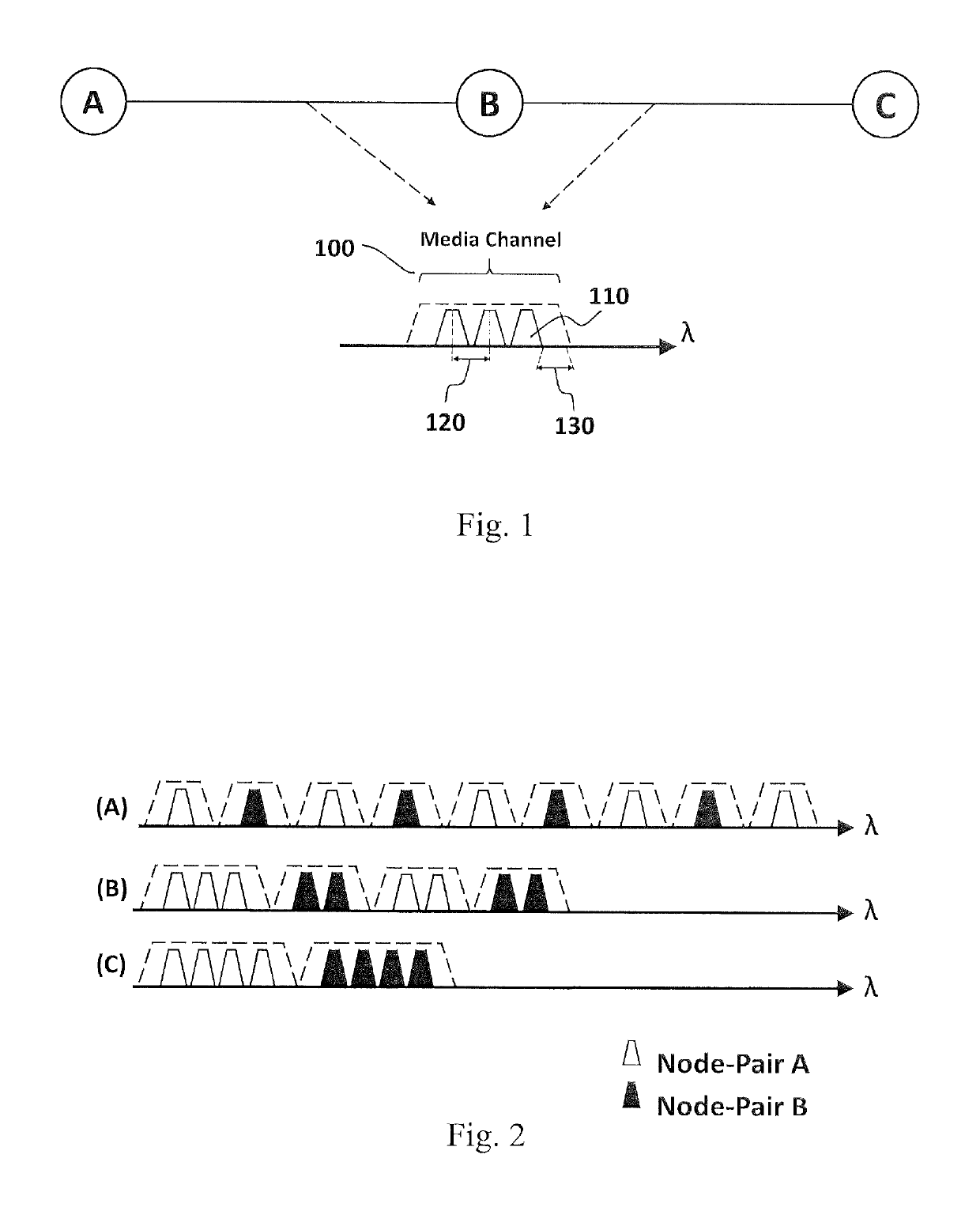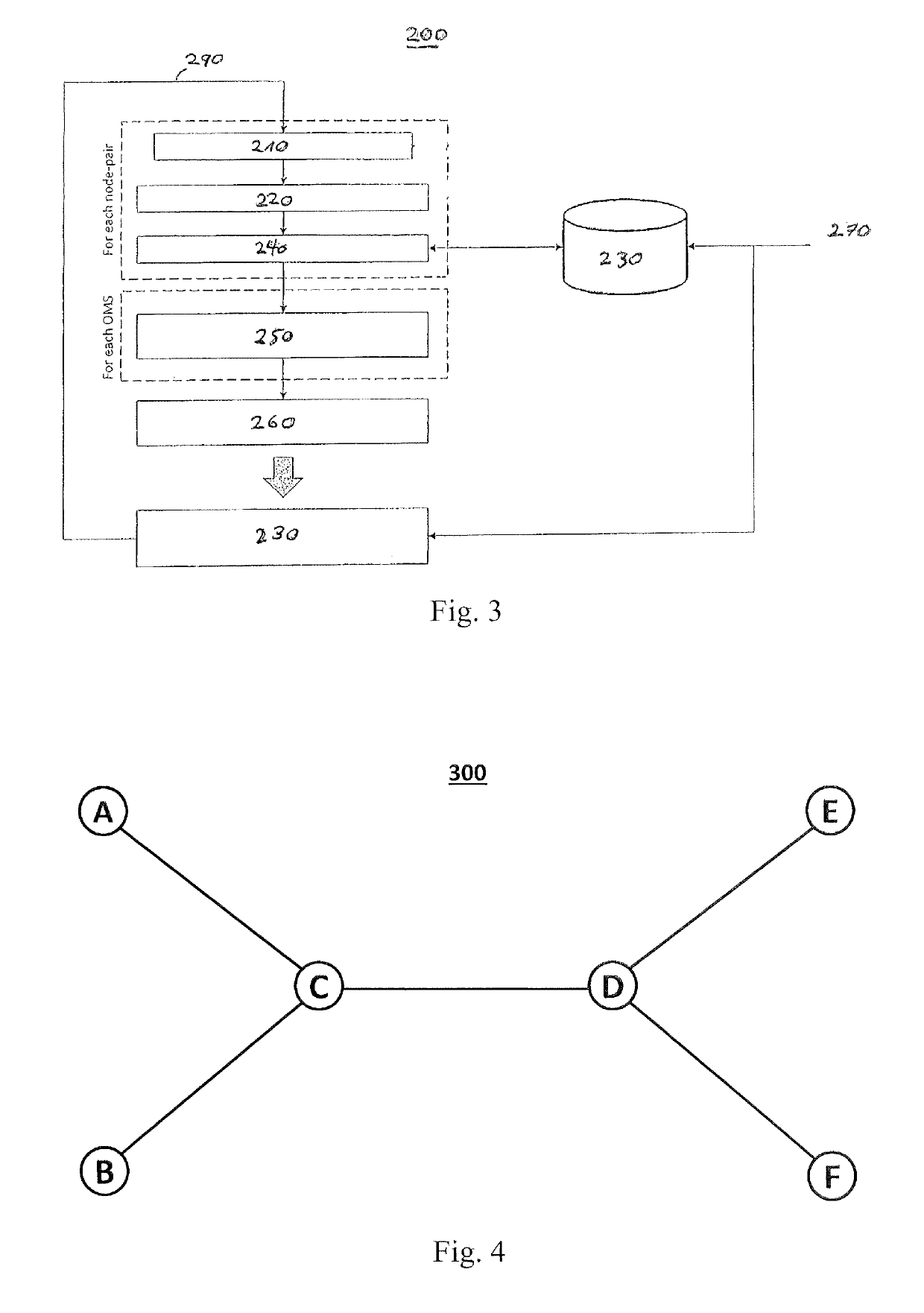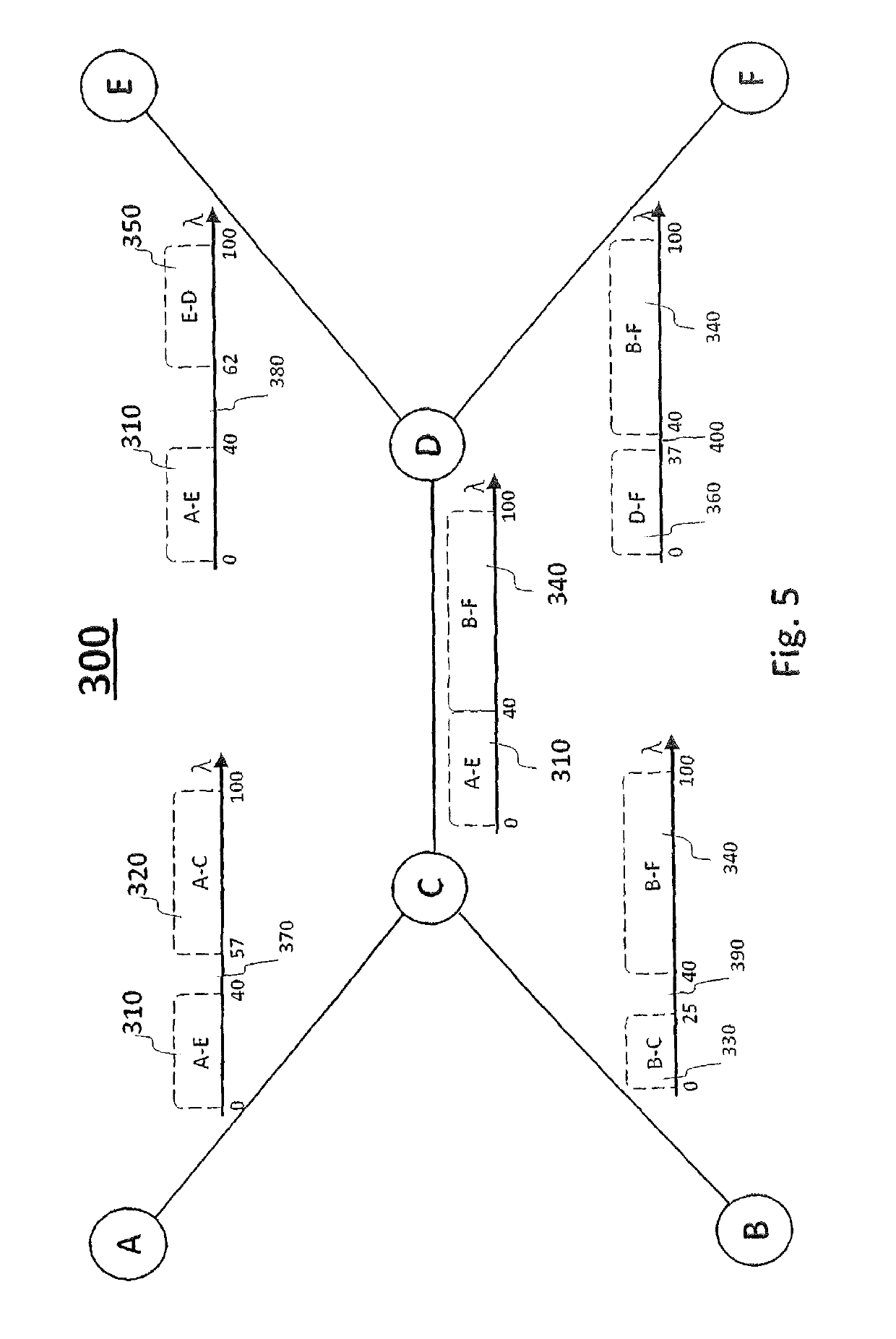Method and system for assigning resources in optical transport networks
a technology of optical transport network and resource allocation, applied in the field of managing resources in optical transport network, can solve the problems of inability to properly coordinate the distribution of available spectral resources among the various mchs, add to the spectral inefficiency of these methods, and affect the assignment effect of resources
- Summary
- Abstract
- Description
- Claims
- Application Information
AI Technical Summary
Benefits of technology
Problems solved by technology
Method used
Image
Examples
Embodiment Construction
[0036]For the purposes of promoting an understanding of the principles of the invention, reference will now be made to the preferred embodiments illustrated in the drawings and specific language will be used to describe the same. It will nevertheless be understood that no limitation of the scope of the invention is thereby intended, such alterations and further modifications in the illustrated devices and method and such further applications of the principles of the invention as illustrated therein being contemplated therein as would normally occur now or in the future to one skilled in the art to which the invention relates.
[0037]FIG. 3 shows an example of the method 200 for assigning resources in an optical transport network according to the present invention. In this example, for a given network topology, candidate paths are queried 210, for example, over the complete set of available paths for each node-pair of the optical transport network. Hence, the method comprises determini...
PUM
 Login to view more
Login to view more Abstract
Description
Claims
Application Information
 Login to view more
Login to view more - R&D Engineer
- R&D Manager
- IP Professional
- Industry Leading Data Capabilities
- Powerful AI technology
- Patent DNA Extraction
Browse by: Latest US Patents, China's latest patents, Technical Efficacy Thesaurus, Application Domain, Technology Topic.
© 2024 PatSnap. All rights reserved.Legal|Privacy policy|Modern Slavery Act Transparency Statement|Sitemap



